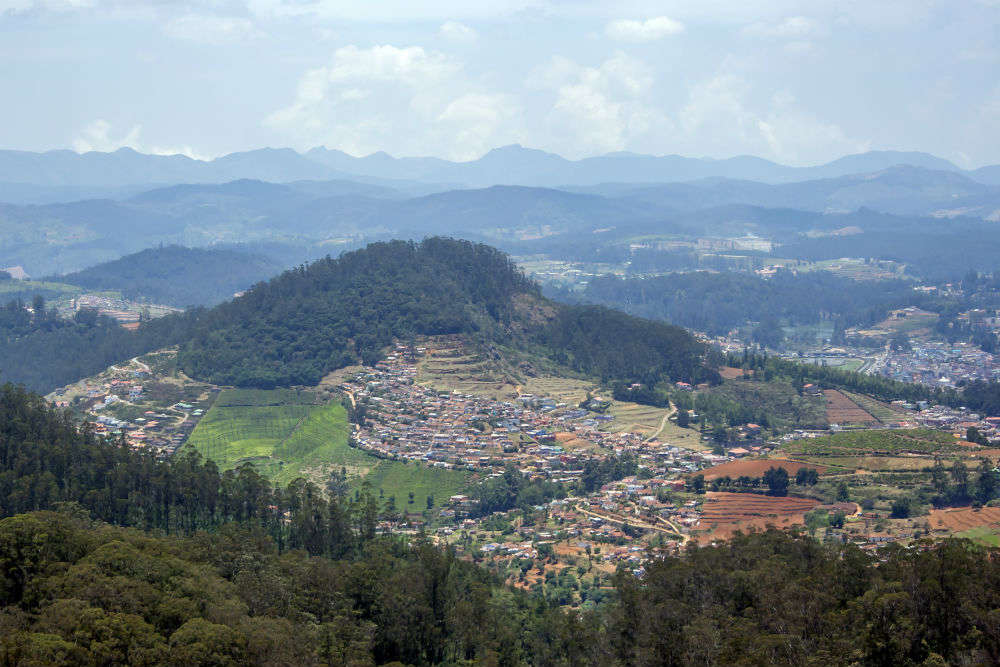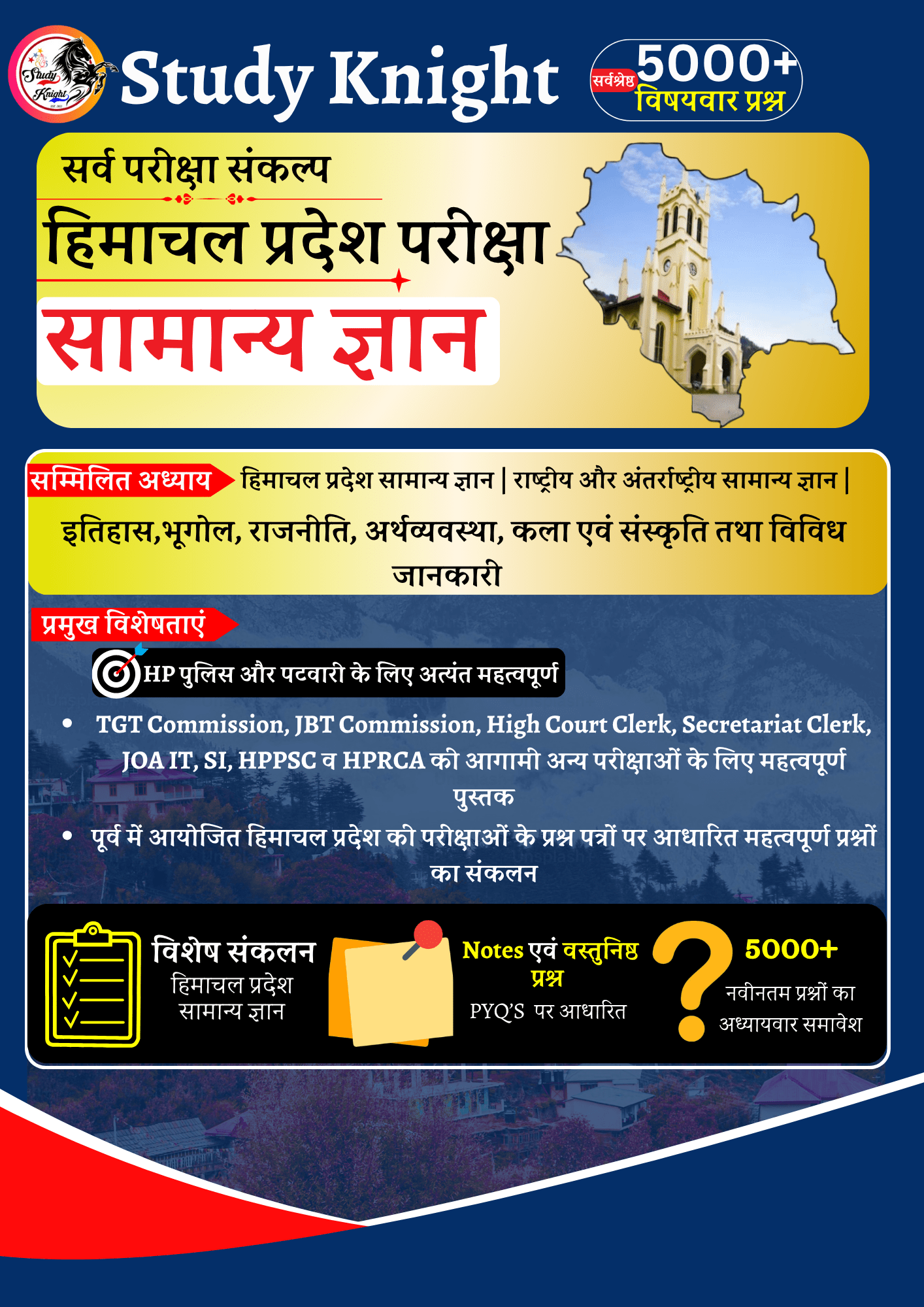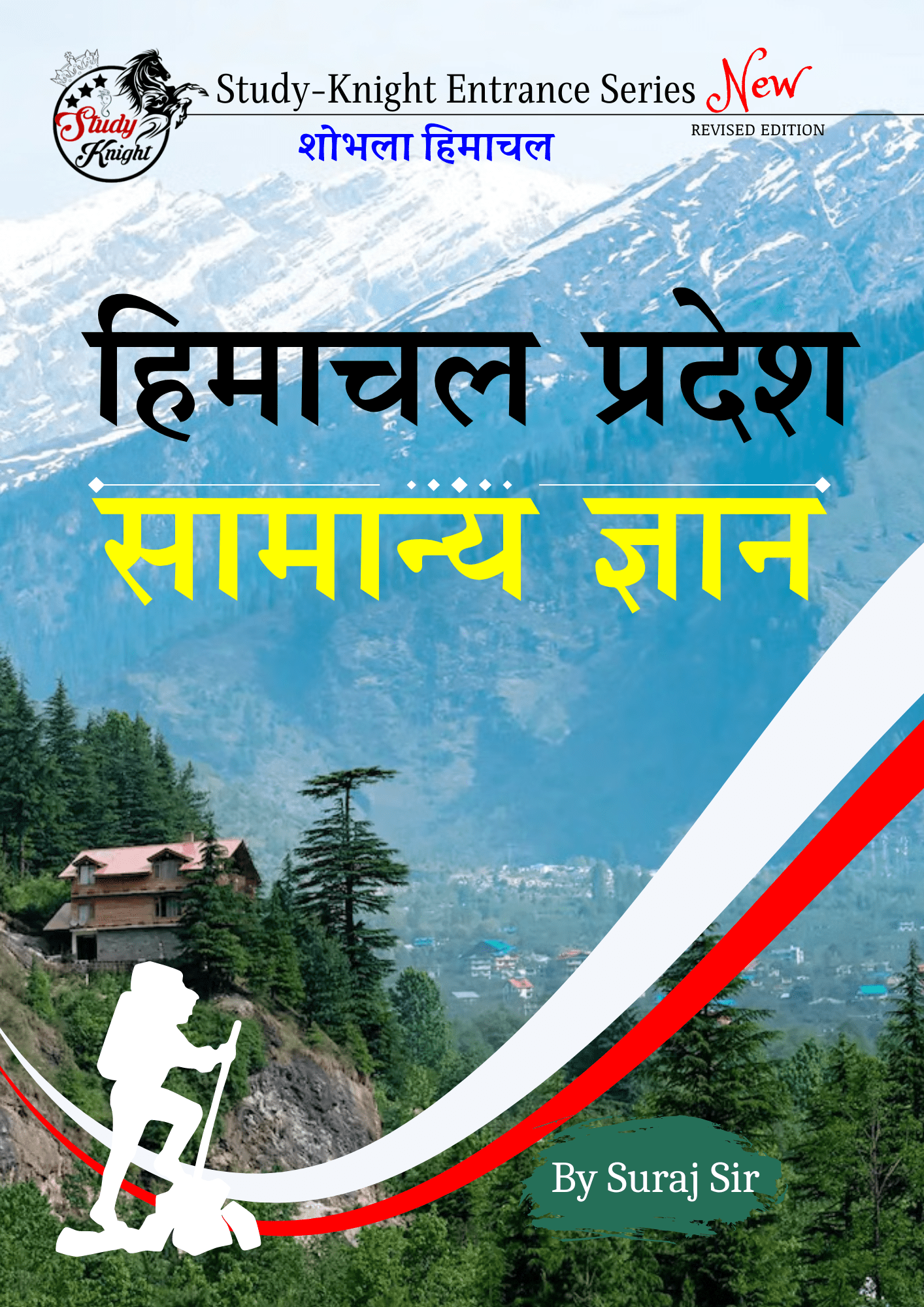mountains and peaks of india
Complete List of Mountain Peaks in India, State-wise with Height PDF for free download. This GK information is very useful for HPAS, HPSSC , HPRCA, SSC ,UPSC, SSC CGL, CPO and all competitive exams.
Also Read This Highest Dams In India
Notable Peaks in the Himalayas and Beyond
Kangchenjunga (8,586 m)
- Location: Border between Nepal and Sikkim, India.
- Significance: Kangchenjunga is the third-highest mountain in the world and holds significant religious and cultural value. It was believed to be the highest peak until Mount Everest was confirmed as the tallest in 1852. The mountain is revered as sacred in both Nepal and Sikkim. The first ascent was made on May 25, 1955, by Joe Brown and George Band, who halted just short of the summit in respect for local traditions. The Indian side of the mountain remains off-limits to climbers to preserve its sanctity. The surrounding Khangchendzonga National Park was declared a UNESCO World Heritage Site in 2016, recognized for its rich biodiversity and cultural importance.

Nanda Devi (7,816 m)
- Location: Uttarakhand, India.
- Significance: Nanda Devi is the second-highest mountain in India and the highest peak located entirely within the country. It was once considered the highest peak in the world before Dhaulagiri was confirmed as taller in 1808. Nanda Devi is also known for its religious significance, being considered the patron goddess of the Garhwal and Kumaon regions. To protect its delicate ecosystem, the peak and its surrounding sanctuary have been off-limits to climbers since 1983. The Nanda Devi National Park, which includes the sanctuary, was designated a UNESCO World Heritage Site in 1988.

Kamet (7,756 m)
- Location: Chamoli District, Uttarakhand, India.
- Significance: Kamet is the second-highest peak in the Garhwal region and is known for its distinctive pyramid-like shape topped with a flat summit area. It is less frequented compared to other high peaks, partly due to its remote location. Kamet was first climbed in 1931 by a British expedition led by Frank Smythe, and it remains a significant but challenging ascent for mountaineers.

K12 (7,428 m)
- Location: Saltoro Range, Karakoram, Ladakh, India.
- Significance: K12 is the second-highest peak in the Saltoro Range, located in the Karakoram range’s remote region. Its name comes from its designation during an early survey of the Karakoram range. K12 has limited climbing activity due to the geopolitical tension in the area and the continued military presence linked to the Siachen conflict. The peak was first attempted in 1960, with successful ascents by Japanese expeditions in 1975. The Indian Army has used K12 for training purposes, including for the Mount Everest expedition in 1985.
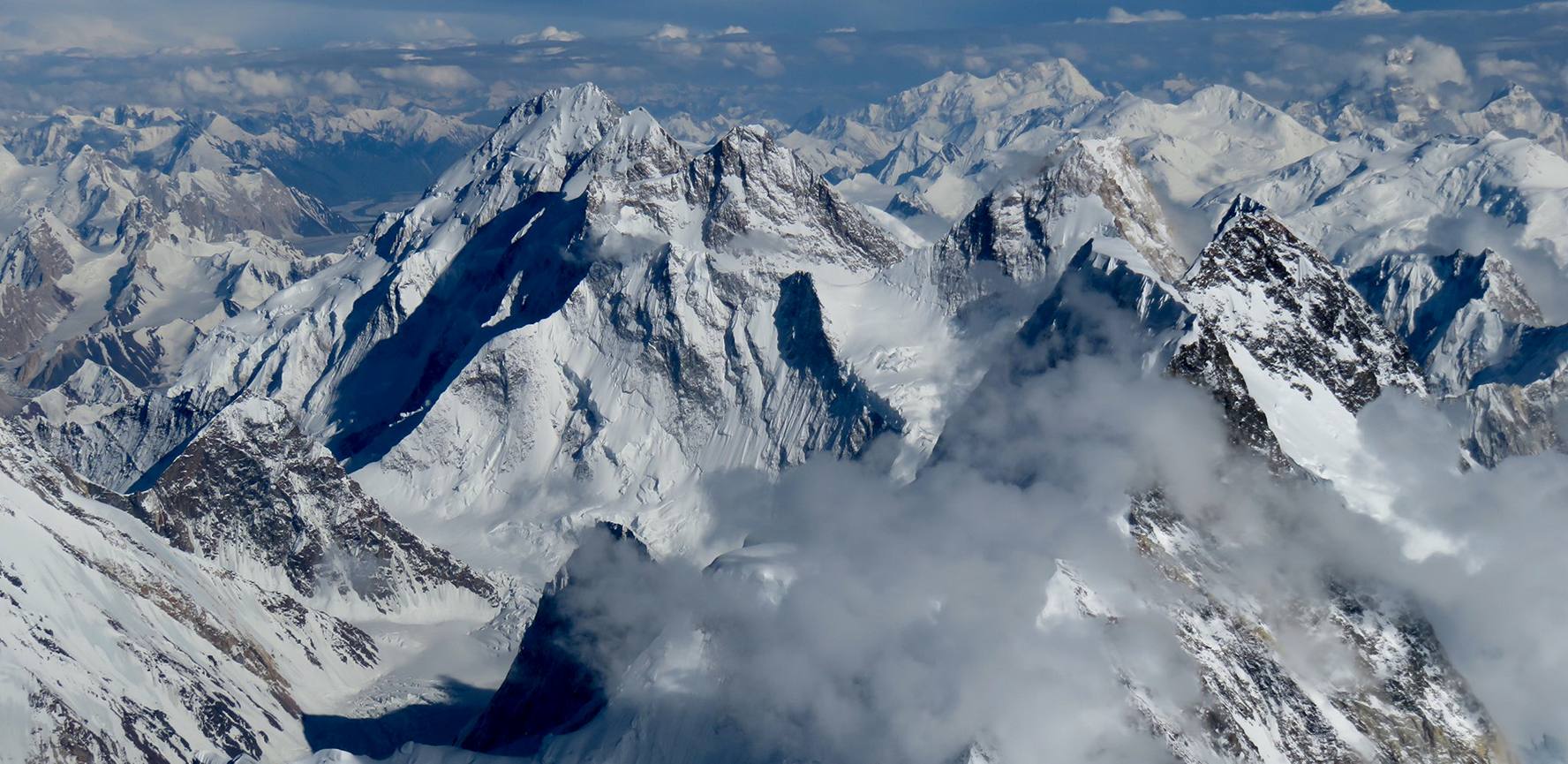
Sri Kailash (6,932 m)
- Location: Uttarakhand, India.
- Significance: Sri Kailash is the fourth-highest peak in the Gangotri region and ranks 204th globally. It is situated at the head of the Raktvarn Glacier. Though not as well-known as other high peaks, Sri Kailash is notable for its remote and rugged terrain, which offers a challenging climb. Its location contributes to its unique position within the diverse topography of the Himalayas.

Namcha Barwa (7,782 m)
- Location: Tibet, near the Indian border.
- Significance: Namcha Barwa is the easternmost peak over 7,600 meters, marking a significant geographic feature of the eastern Himalayas. It is notable for its dramatic prominence and the surrounding region’s role in the Brahmaputra River’s course. The peak is a prominent feature in the easternmost reaches of the Himalayas, often regarded as a key point of interest for mountaineers and geographers alike.

Dhupgarh (1,350 m)
- Location: Mahadeo Hills, Satpura Range, Madhya Pradesh, India.
- Significance: Dhupgarh is the highest peak in the Satpura Range, known for its unique basaltic rock structure. The area features a variety of geological formations, including slate, schist, and granite deposits. Dhupgarh is a popular tourist spot, offering panoramic views and a cooler climate compared to the surrounding lowlands.
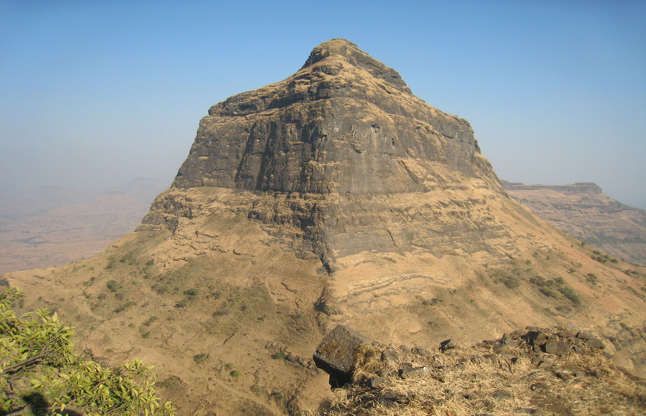
Anai Mudi (2,695 m)
- Location: Kerala, India.
- Significance: Anai Mudi is the highest peak in the Western Ghats and South India. Its name means “Elephant Forehead,” reflecting its prominent and distinctive appearance. Located at the junction of the Palni, Cardamom, and Annamalai hills, Anai Mudi is part of the Eravikulam National Park, which is renowned for its rich biodiversity and conservation efforts.

Doddabetta (2,637 m)
- Location: Nilgiri Hills, Tamil Nadu, India.
- Significance: Doddabetta is the highest peak in the Nilgiris, situated 35 kilometers north of Ooty. It is a popular tourist destination with road access up to the summit. The peak features an observatory with telescopes, offering views of the surrounding hills and the unique Shola forests that cover its slopes.
Saddle Peak (732 m)
- Location: North Andaman Island, Andaman and Nicobar Islands, India.
- Significance: Saddle Peak is the highest peak in the Andaman and Nicobar Islands. It is characterized by its distinct twin peaks and is part of the Saddle Peak National Park. The area around Saddle Peak is known for its rich biodiversity and dense vegetation, making it a significant natural landmark in the region.
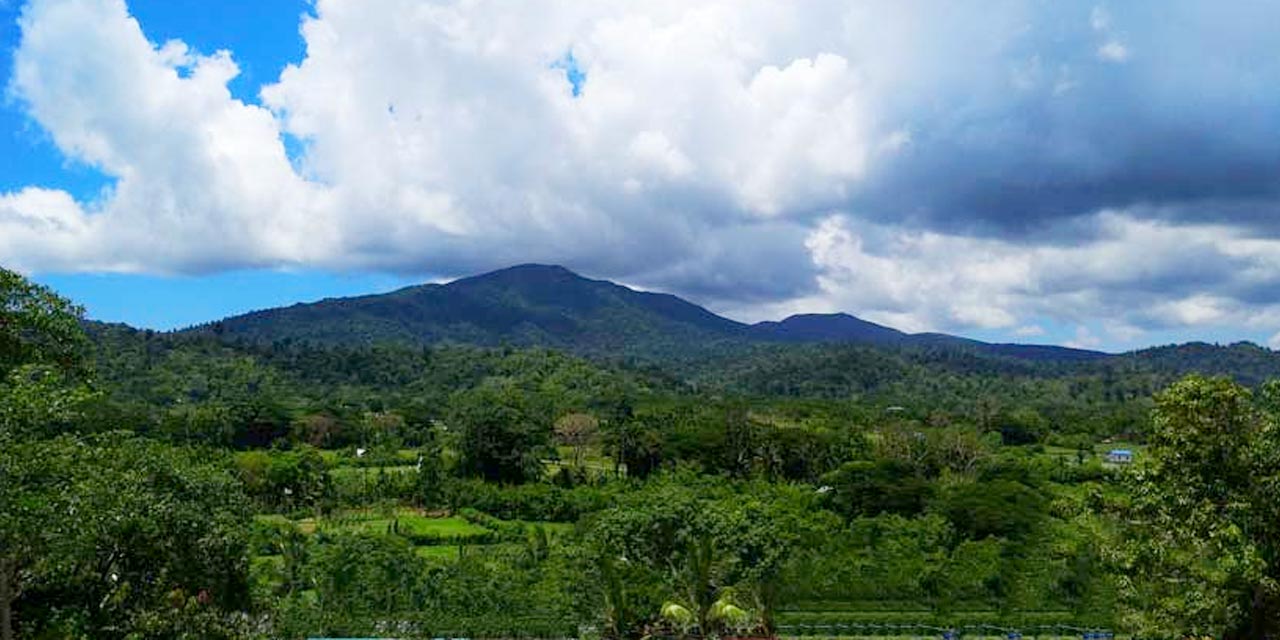
Saser Kangri (7,672 m)
- Location: Ladakh, India.
- Significance: Saser Kangri is the 35th highest mountain in the world and lies in the Saser Muztagh range, an eastern subrange of the Karakoram. The peak is notable for its challenging climbing routes and remote location, contributing to its status as a significant but less frequently climbed peak.
Mamostong Kangri (7,516 m)
- Location: Near Siachen Glacier, India.
- Significance: Mamostong Kangri is the highest peak in the Rimo Muztagh range. It is the 48th highest peak globally and is known for its high elevation and challenging climbing conditions. The peak’s remote location adds to its allure for mountaineers seeking less-traveled paths.
Rimo I (7,385 m)
- Location: Rimo Muztagh, Karakoram, India.
- Significance: Rimo I is part of the Rimo Muztagh range, a subrange of the Great Karakoram. It is the 71st highest peak in the world and is known for its remote and rugged terrain. The peak presents a significant challenge for climbers due to its high altitude and challenging weather conditions.
Hardeol (7,151 m)
- Location: Kumaon Himalaya, Uttarakhand, India.
- Significance: Hardeol, known as the “Temple of God,” is one of the oldest and most revered summits in the Kumaon Himalaya. Its significant elevation and historical importance make it a notable peak in the region’s climbing history.
Chaukhamba I (7,138 m)
- Location: Garhwal, Uttarakhand, India.
- Significance: Chaukhamba I is part of the Gangotri Group and is a major peak in the Garhwal Himalayas. It is known for its distinctive shape and significant height, contributing to its status as a prominent feature in the Garhwal range.
Trisul I (7,120 m)
- Location: Kumaon Himalaya, Uttarakhand, India.
- Significance: Trisul I is one of the three peaks in the Trisul massif and is named after the weapon of Lord Shiva. The peak is notable for its challenging climbing conditions and its place within the broader context of the Kumaon Himalaya.
Highest Mountain Peaks in India
- Kangchenjunga
- Height: 8,586 meters (28,169 feet)
- Description: The third highest summit in the world, located in the Himalayan Mountain Range in Sikkim. Known as the “Five Treasures of Snow.”
- K2
- Height: 8,611 meters (28,251 feet)
- Description: The highest peak in the Indian subcontinent, located on the border between Baltistan and Xinjiang. It is the second highest peak in the world and the highest in the Karakoram Range.
- Nanda Devi
- Height: 7,816 meters (25,643 feet)
- Description: The highest peak entirely within India, located in the Garhwal Himalayas. Ranked 23rd highest in the world and surrounded by the Nanda Devi National Park, known for its high-altitude flora and fauna.
- Kamet
- Height: 7,756 meters (25,446 feet)
- Description: Located near the Tibetan Plateau in the Garhwal region of Uttarakhand.
- Saltoro Kangri
- Height: 7,742 meters (25,400 feet)
- Description: Situated near the Siachen Glacier, it is the 31st highest peak in the world and lies in the Saltoro Range, a part of the Karakoram Range.
- Saser Kangri
- Height: 7,672 meters (25,171 feet)
- Description: The 35th highest mountain peak in the world, located in the Saser Muztagh Range of Ladakh, which is an easternmost subrange of the Karakoram Range.
- Mamostong Kangri / Mamostang Kangri
- Height: 7,516 meters (24,659 feet)
- Description: Located near the Siachen Glacier, it is the highest peak in the Rimo Muztagh Range, part of the Karakoram Range.
- Rimo I
- Height: 7,385 meters (24,229 feet)
- Description: Part of the Rimo Muztagh, a subrange of the Great Karakoram Range, it is the 71st highest peak in the world.
- Hardeol
- Height: 7,151 meters (23,458 feet)
- Description: Also known as the “Temple of God,” this peak is one of the oldest summits in the Kumaon Himalaya.
- Chaukhamba I
- Height: 7,138 meters (23,418 feet)
- Description: Located in the Garhwal district of Uttarakhand, part of the Gangotri Group of the Garhwal Himalaya ranges.
- Trisul I
- Height: 7,120 meters (23,359 feet)
- Description: Named after the weapon of Lord Shiva, this peak is one of three located in the Kumaon Himalaya in Uttarakhand.
State-wise Highest Mountain Peaks in India
- Andhra Pradesh:
- Arma Konda – 1,680 meters (5,512 feet), Eastern Ghats
- Arunachal Pradesh:
- Kangto – 7,060 meters (23,163 feet), Eastern Himalaya
- Bihar:
- Someshwar Fort – 880 meters (2,887 feet), West Champaran District
- Chhattisgarh:
- Bailadila Range – 1,276 meters (4,186 feet), Dantewada District
- Goa:
- Sonsogor – 1,166 meters (3,825 feet), Western Ghats
- Gujarat:
- Girnar – 1,069 meters (3,507 feet), Junagadh District
- Haryana:
- Karoh Peak – 1,467 meters (4,813 feet), Morni Hills
- Himachal Pradesh:
- Reo Purgyil – 6,816 meters (22,362 feet), Western Himalaya
- Jharkhand:
- Parasnath – 1,370 meters (4,491 feet), Parasnath Hills
- Karnataka:
- Mullayanagiri – 1,930 meters (6,332 feet), Western Ghats
- Kerala:
- Anamudi – 2,695 meters (8,807 feet), Western Ghats
- Madhya Pradesh:
- Dhupgarh – 1,350 meters (4,429 feet), Satpura Range
- Maharashtra:
- Kalsubai – 1,646 meters (5,400 feet), Western Ghats
- Manipur/Nagaland Border:
- Mount Iso – 2,994 meters (9,826 feet), Senapati District
- Meghalaya:
- Shillong Peak – 1,965 meters (6,446 feet), Khasi Hills
- Mizoram:
- Phawngpui – 2,157 meters (7,073 feet), Saiha District
- Nagaland:
- Mount Saramati – 3,826 meters (12,552 feet), Naga Hills
- Odisha:
- Deomali – 1,672 meters (5,489 feet), Eastern Ghats
- Rajasthan:
- Guru Shikhar – 1,722 meters (5,650 feet), Aravalli Range
- Sikkim:
- Kanchenjunga – 8,586 meters (28,169 feet), Eastern Himalaya
- Tamil Nadu:
- Doddabetta – 2,637 meters (8,652 feet), Nilgiri Hills
- Telangana/Chhattisgarh Border:
- Doli Gutta – 965 meters (3,166 feet), Deccan Plateau
- Tripura:
- Betalongchhip – 930 meters (3,051 feet), Jampui Hills
- Uttar Pradesh:
- Amsot Peak – 945 meters (3,104 feet), Shivalik Hills
- Uttarakhand:
- Nanda Devi – 7,816 meters (25,643 feet), Garhwal Himalaya
- West Bengal:
- Sandakphu – 3,636 meters (11,929 feet), Eastern Himalaya
This list covers a range of prominent peaks across different states and regions in India, from the towering summits of the Himalayas to significant peaks in other ranges.
Q.1
Which mountain was considered the highest in the world before Mount Everest was confirmed as higher in 1852?
A. Nanda Devi
B. Kangchenjunga
C. Kamet
D. K12
Answer: B. Kangchenjunga
Explanation: Kangchenjunga was believed to be the highest mountain until Mount Everest was confirmed as higher in 1852.
Q.2
Which peak is known as the highest mountain in India located entirely within the country?
A. Kangchenjunga
B. Nanda Devi
C. Kamet
D. Anai Mudi
Answer: B. Nanda Devi
Explanation: Nanda Devi is the highest mountain located entirely within India, with Kangchenjunga straddling the India-Nepal border.
Q.3
The first ascent of Kangchenjunga was achieved by which expedition?
A. Japanese Expedition
B. British Kangchenjunga Expedition
C. Indian Army Expedition
D. Swiss Expedition
Answer: B. British Kangchenjunga Expedition
Explanation: Kangchenjunga was first climbed by Joe Brown and George Band of the 1955 British Kangchenjunga Expedition.
Q.4
Which of the following peaks is the second-highest in the Garhwal region of Uttarakhand, India?
A. Nanda Devi
B. Kamet
C. Sri Kailash
D. Doddabetta
Answer: B. Kamet
Explanation: Kamet is the second-highest peak in the Garhwal region of Uttarakhand, India, after Nanda Devi.
Q.5
Which peak is known for its distinctive pyramid-like appearance with a flat summit area?
A. K12
B. Nanda Devi
C. Anai Mudi
D. Dhupgarh
Answer: A. K12
Explanation: Kamet has a pyramid-like appearance with a flat summit area, distinguishing it from other peaks.
Q.6
What was the name given to the peak that is now known as K12 during the original survey of the Karakoram range?
A. Khangchendzonga
B. Saltoro Kangri
C. K12
D. Saser Kangri
Answer: C. K12
Explanation: K12 was the designation given to the peak during the original survey of the Karakoram range.
Q.7
Which mountain has been declared a UNESCO World Heritage Site in 2016 for its biodiversity and cultural significance?
A. Nanda Devi
B. K12
C. Kangchenjunga
D. Sri Kailash
Answer: C. Kangchenjunga
Explanation: The Khangchendzonga National Park, surrounding Kangchenjunga, was declared a UNESCO World Heritage Site in 2016.
Q.8
Which peak is the highest in the Western Ghats and South India?
A. Anai Mudi
B. Doddabetta
C. Mahabaleshwar
D. Agastyamalai
Answer: A. Anai Mudi
Explanation: Anai Mudi is the highest peak in the Western Ghats and South India.
Q.9
Which peak is the highest in the Satpura Range?
A. Dhupgarh
B. Mahendragiri
C. Parasnath
D. Saltoro Kangri
Answer: A. Dhupgarh
Explanation: Dhupgarh is the highest peak in the Satpura Range.
Q.10
Which peak is known as the highest peak in the Rimo Muztagh range?
A. Rimo I
B. Saser Kangri
C. Mamostong Kangri
D. Hardeol
Answer: C. Mamostong Kangri
Explanation: Mamostong Kangri is the highest peak in the Rimo Muztagh range.
Q.11
The peak known as “Temple of God” refers to which mountain?
A. Chaukhamba I
B. Trisul I
C. Hardeol
D. Kamet
Answer: C. Hardeol
Explanation: Hardeol is referred to as the “Temple of God” in the Kumaon Himalaya.
Q.12
Which peak is the 47th highest located entirely within India and is situated in the Gangotri region?
A. Kamet
B. Sri Kailash
C. Nanda Devi
D. Anai Mudi
Answer: B. Sri Kailash
Explanation: Sri Kailash is the 47th highest peak located entirely within India, situated in the Gangotri region.
Q.13
Which of the following peaks is the highest in the Nilgiri Hills?
A. Doddabetta
B. Anai Mudi
C. Mahendragiri
D. Kalsubai
Answer: A. Doddabetta
Explanation: Doddabetta is the highest peak in the Nilgiri Hills.
Q.14
Which peak is the highest in the Sahyadri range in Maharashtra?
A. Kalsubai
B. Mahabaleshwar
C. Anai Mudi
D. Dhupgarh
Answer: A. Kalsubai
Explanation: Kalsubai is the highest peak in the Sahyadri range in Maharashtra.
Q.15
Which mountain peak is located at the border of Tamil Nadu and Kerala, and is part of the Neyyar wildlife sanctuary?
A. Agastyamalai
B. Mahendragiri
C. Nanda Devi
D. Dhupgarh
Answer: A. Agastyamalai
Explanation: Agastyamalai is located at the border of Tamil Nadu and Kerala and is part of the Neyyar wildlife sanctuary.
Q.16
Which peak has an elevation of 7,742 meters and was assumed military control by India in 1984?
A. Saltoro Kangri
B. Mamostong Kangri
C. Saser Kangri
D. K12
Answer: A. Saltoro Kangri
Explanation: Saltoro Kangri, with an elevation of 7,742 meters, was assumed military control by India in 1984.
Q.17
Which peak is the highest in the Aravallis and is located near Mount Abu?
A. Guru Shikhar
B. Dhupgarh
C. Anai Mudi
D. Parasnath
Answer: A. Guru Shikhar
Explanation: Guru Shikhar is the highest peak in the Aravallis and is located near Mount Abu.
Q.18
Which mountain is known for its distinct twin peaks and is the highest in the Andaman and Nicobar Islands?
A. Saddle Peak
B. Blue Mountain
C. Saramati
D. Namcha Barwa
Answer: A. Saddle Peak
Explanation: Saddle Peak, with its distinct twin peaks, is the highest in the Andaman and Nicobar Islands.
Q.19
Which peak in the Purvanchal Hills is known for its snow-covered conditions during winter?
A. Saramati
B. Blue Mountain
C. Parasnath
D. K12
Answer: A. Saramati
Explanation: Saramati, the highest peak in the Purvanchal Hills, is known for being snow-covered during winter.
Q.20
Which peak in the Ladakh region is the 35th highest mountain in the world?
A. Mamostong Kangri
B. Rimo I
C. Saser Kangri
D. Abi Gamin
Answer: C. Saser Kangri
Explanation: Saser Kangri is the 35th highest mountain in the world and is located in Ladakh.
List of Mountain Peaks in India
| Highest Mountain Peak | Height | State |
| Arama Konda | 1680 m | Andhra Pradesh |
| Kangto (divided with Tibet) | 7060 m | Arunachal Pradesh |
| Nyegyi Kansang | 7047 m | Arunachal Pradesh |
| Unamed Peak near Laike | 6430 m | Assam |
| Someshwar Fort | 880 m | Bihar |
| Bailadila Range | 1276 m | Chhattisgarh |
| Sosogad | 1022 m | Goa |
| Girnar | 1069 m | Gujarat |
| Karoh Peak | 1467 m | Haryana |
| Reo Purgyil | 6816 m | Himachal Pradesh |
| Apsarasas Kangri | 7245 m | Jammu and Kashmir |
| Chong Kumdang Ri | 7071 m | Jammu and Kashmir |
| Ghent Kangri | 7,401 m | Jammu and Kashmir |
| Nun Kun | 7135 m | Jammu and Kashmir |
| Rimo I | 7385 m | Jammu and Kashmir |
| Teram Kangri | 7,462 m | Jammu and Kashmir |
| Saltoro Kangri | 7742 m | Jammu and Kashmir (Administered) |
| K2 | 8611 m | Jammu and Kashmir (claimed) |
| Parasnath | 1370 m | Jharkhand |
| Mulayyanagiri | 1930 m | Karnataka |
| Anamudi | 2695 m | Kerala |
| Dhupgarh | 1350 m | Madhya Pradesh |
| Kalsubai | 1646 m | Maharastra |
| Phawngpui | 2157 m | Mizoram |
| Mount Saramati | 3826 m | Nagaland |
| Deomali | 1672 m | Odisha |
| Unnamed Point on the Naina Devi range | 1000 m | Punjab |
| Guru Shikhar | 1722 m | Rajasthan |
| Jongsong Peak | 7,462 m | Sikkim |
| Kabru | 7338 m | Sikkim |
| Kangchenjunga | 8586 m | Sikkim |
| Kirat Chuli | 7365 m | Sikkim |
| Langpo | 6965m | Sikkim |
| Pauhunri | 7128 m | Sikkim |
| Doddabetta | 2637 m | Tamil Nadu |
| Betlingchhip | 930 m | Tripura |
| Chaukhamba | 7138 | Uttarakhand |
| Dunagiri | 7,066 m | Uttarakhand |
| Hardeol | 7151 m | Uttarakhand |
| Kalanka | 6931 m | Uttarakhand |
| Kamet | 7756 m | Uttarakhand |
| Kedarnath | 6,940 m | Uttarakhand |
| Nanda Devi | 7816 m | Uttarakhand |
| Satopanth | 4,600 m | Uttarakhand |
| Thalay Sagar | 6,904 m | Uttarakhand |
| Sandakphu | 3636 m | West Bengal |


